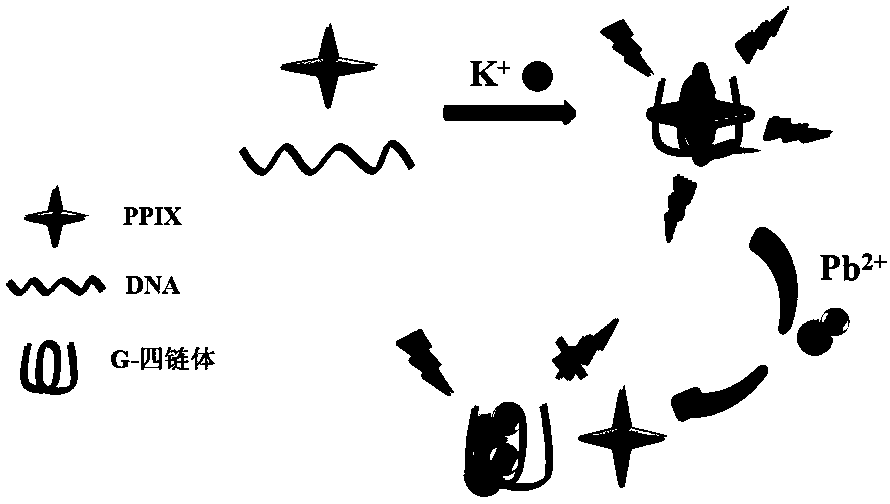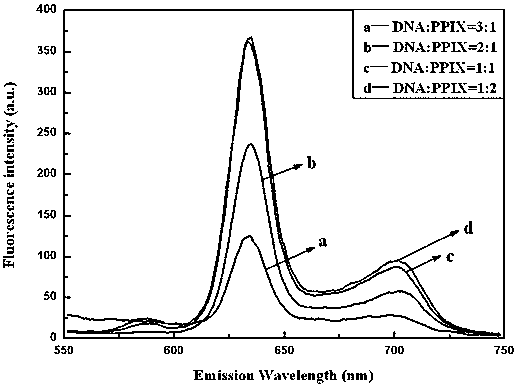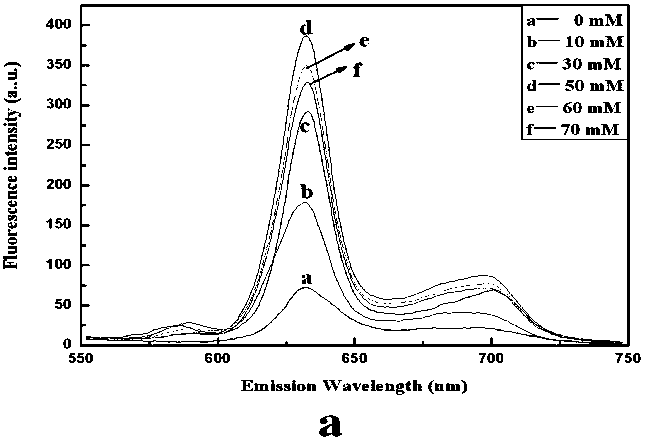Method for testing Pb2+ concentration by using DNA sensor based on G-quadruplex
A testing method and sensor technology, applied in the field of DNA sensors, can solve the problems of not avoiding DNA fluorescent labeling, complicated preparation process, unfavorable application, etc., and achieve the effect of meeting daily detection requirements, low cost, good sensitivity and selectivity
- Summary
- Abstract
- Description
- Claims
- Application Information
AI Technical Summary
Problems solved by technology
Method used
Image
Examples
Embodiment Construction
[0020] (1) Weigh NaCl, dissolve it with deionized water and dilute to 10mL, prepare to a concentration of 1M, store at 4°C, and dilute to the required concentration when used.
[0021] (2) Prepare a Tris-HCl buffer solution with pH = 6.0, then weigh 0.0169g of lead nitrate, dissolve it gradually with the prepared buffer solution and adjust the volume to 50mL, prepare it to a concentration of 1mM, and store it in the dark at 4°C , diluted to the desired concentration when used.
[0022] (3) Place Tris-HCl buffer (50mM, containing 50mM KCl, 10mM NaCl) containing G-quadruplex DNA (0.5μM) in a constant temperature water bath, keep it at different temperatures for 10 minutes, and then inject it In a 1cm quartz cuvette, the absorbance at 295nm was measured with a UV spectrophotometer.
[0023] (4) Put the mixed solution (containing 50mM Tris-HCl buffer solution pH6.0, 0.5μM DNA, different concentrations of KCl, 10mM NaCl, so that the total volume is 1mL) in a water bath at 95°C for...
PUM
 Login to View More
Login to View More Abstract
Description
Claims
Application Information
 Login to View More
Login to View More - R&D
- Intellectual Property
- Life Sciences
- Materials
- Tech Scout
- Unparalleled Data Quality
- Higher Quality Content
- 60% Fewer Hallucinations
Browse by: Latest US Patents, China's latest patents, Technical Efficacy Thesaurus, Application Domain, Technology Topic, Popular Technical Reports.
© 2025 PatSnap. All rights reserved.Legal|Privacy policy|Modern Slavery Act Transparency Statement|Sitemap|About US| Contact US: help@patsnap.com



